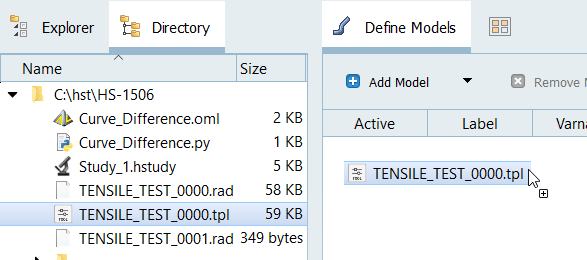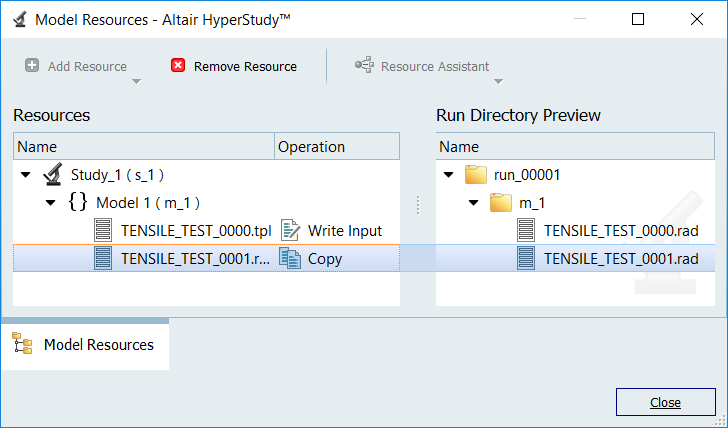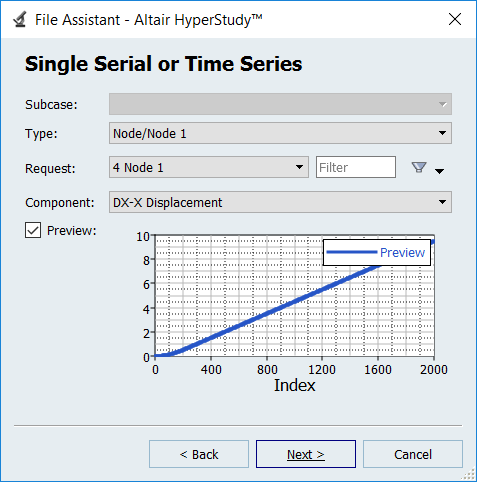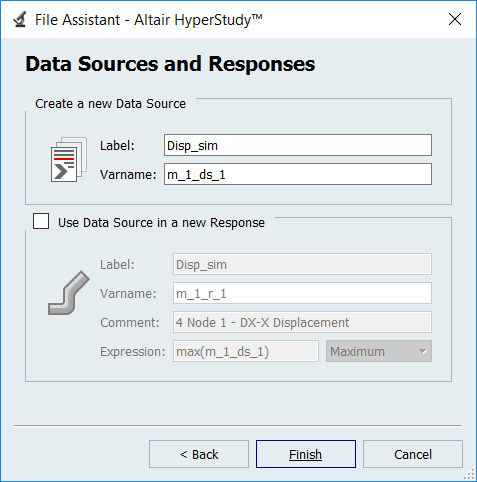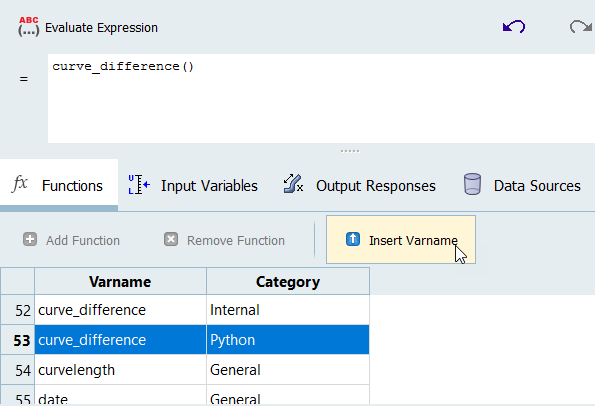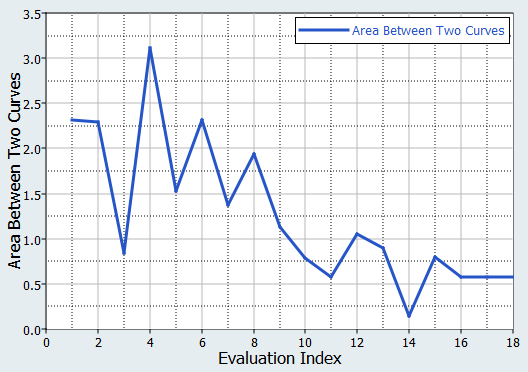HS-1506: Material Calibration with a Curve Difference Integral
In this tutorial, you will learn how to register a Compose, Python, or Templex function in HyperStudy.
The .py and .oml file contain a function that calculates the area between two curves.
The objective of this tutorial is to find the Radioss material parameter values so that the stress-strain curve of the tensile test simulation matches the tensile test experimental curve.
HS-1507: Material Calibration with Area Tool in Data Source provides an alternative method to set up this problem using the Area tool.
HS-4200: Material Calibration Using System Identification provides an alternative method to set up this problem using system identification.
- Create an input template from a Radioss file using the HyperStudy - Editor
- Register a Compose, Python, or Templex function
- Set up a study
- Run a system identification optimization study
Model Definition
A quarter of a standard tensile test specimen is modeled using symmetry conditions. A traction is applied to a specimen via an imposed velocity at the left-end.

Figure 1. Geometry of the Tensile Specimen (One Quarter of the Specimen is Modeled)
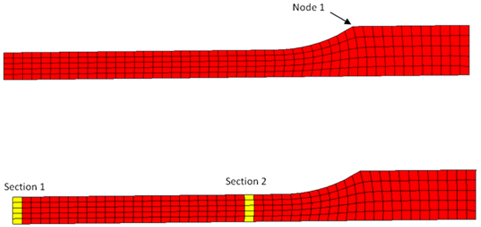
Figure 2. Sections of Node Saved for Time History

- Stress level
- Plastic strain
- Yield Stress
- Hardening modulus
- Hardening exponent
- Strain rate coefficient
- Strain rate
- Reference strain rate
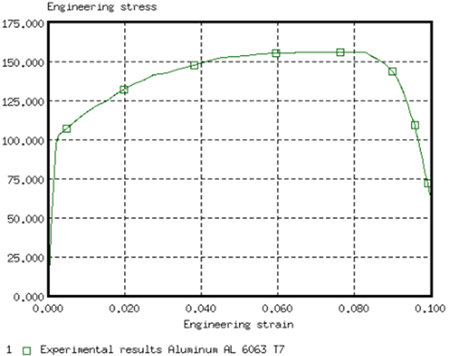
Figure 3. Engineering Stress Versus Engineering Strain Curve (Experimental Data)
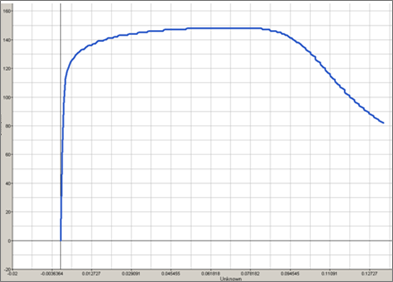
Figure 4. Engineering Stress Versus Strain Curve (Simulation Results)
Create Base Input Template
In this step, you can create the base input template in HyperStudy or use the base input template in the study Directory.
Register Curve Difference Function
In this step you will register the curve difference function using Compose/OML, Python, or Templex.
The function curve_difference calculates the integral of the absolute value of the difference between two curves over the common domain of the supplied functions. This is a robust function that tends to zero only as the two functions become equal.
Perform the Study Setup
Perform Nominal Run
Create and Evaluate Output Responses
In this step, you will use the curve_difference function to create and evaluate output responses.
In order to fit the RADIOSS stress-strain curve to the experimental data, you must compare the two curves.
 .
.
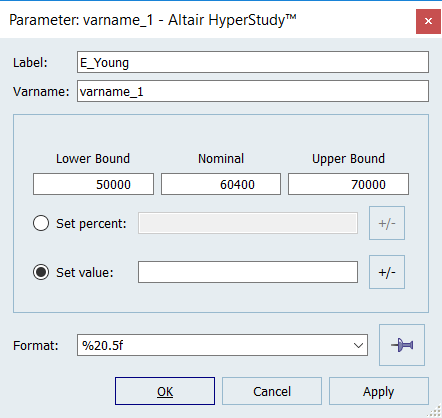
 .
.